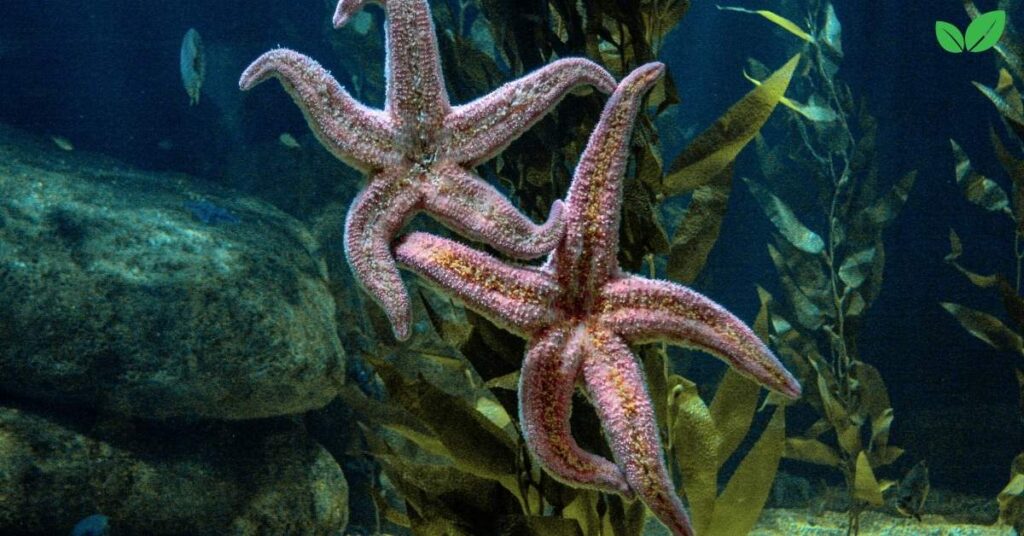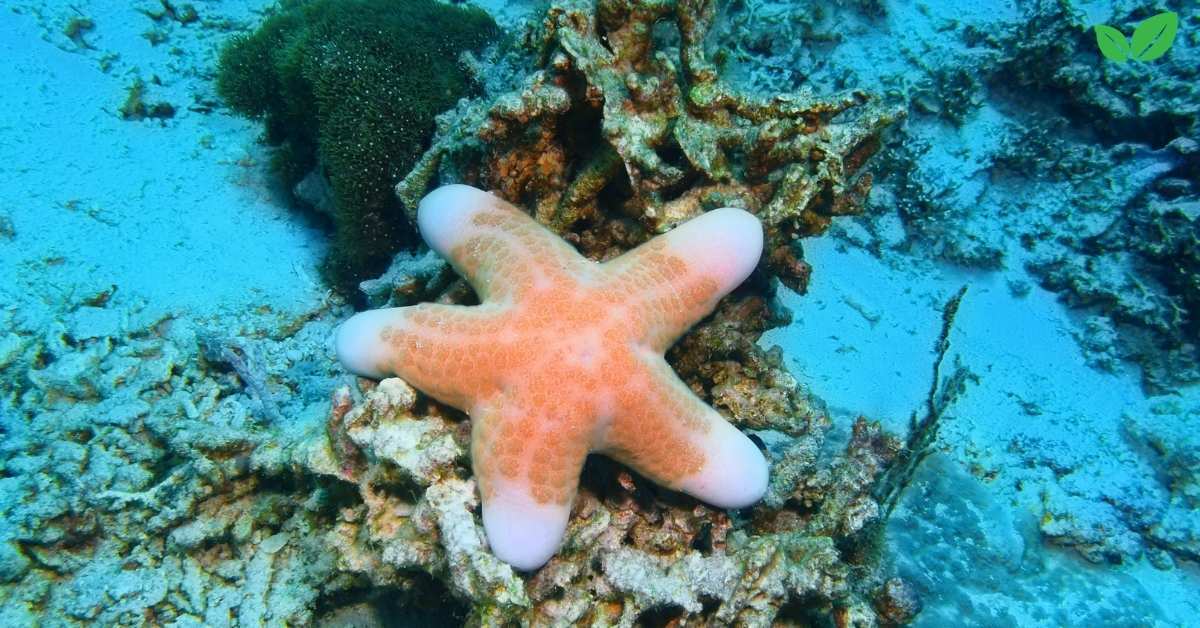Introduction
The oceans, which cover more than 70% of the Earth’s surface, are home to some of the most fascinating and complex life forms. Among these marine wonders is the starfish, a creature that captures the imagination with its unique appearance and intriguing ecological role. Despite being commonly referred to as a “fish,” the star fish, also known as sea star, is actually an echinoderm—closely related to sea urchins, sand dollars, and sea cucumbers. With over 2,000 known species inhabiting diverse marine environments, star fish play a vital role in the ecosystem, impacting everything from the health of coral reefs to the balance of marine biodiversity.
In this article, we will explore the environmental niche of star fish, examining their biological traits, habitats, ecological roles, threats, and the importance of conservation efforts. We’ll also delve into how starfish have adapted to their surroundings and the crucial environmental functions they perform, illustrating their significance in the marine ecosystem.
Star fish Biology and Adaptations

Unique Anatomy and Functions
Starfish have a body structure that sets them apart from many other sea creatures. Their radial symmetry typically features five arms extending from a central disc, though some species can have as many as 40 arms. This radial symmetry helps starfish move in multiple directions and gives them flexibility in exploring their surroundings for food. Their arms are equipped with tube feet, which function through a water vascular system, enabling them to grip surfaces and capture prey.
Another remarkable feature of starfish is their ability to regenerate lost arms. This regeneration is not only a survival mechanism in case of injury or predation but also a method of asexual reproduction in some species. Starfish lack a centralized brain but possess a complex nervous system that allows them to respond to environmental stimuli. Their eyes, located at the tips of their arms, provide rudimentary sight to detect light and shadow, aiding them in navigation across the seabed.
Starfish Species and Their Habitats
Star fish inhabit various marine environments, from tropical coral reefs to the deep-sea floor. Some species, such as the crown-of-thorns starfish (Acanthaster planci), are notorious for their impact on coral reefs. These species prefer warm, tropical waters and are often found in the Indo-Pacific region. Meanwhile, species like the Arctic star fish thrive in colder environments, demonstrating the diverse ecological range of starfish.
While most starfish prefer shallow waters, some species can be found in the deep sea at depths of up to 6,000 meters. The ability to survive in such extreme conditions showcases the remarkable adaptability of starfish to different environmental niches.
Ecological Role of Star fish

Keystone Species in Marine Ecosystems
Starfish serve as keystone species in many marine ecosystems. Keystone species are organisms that have disproportionately large effects on their environment relative to their abundance. Through their feeding habits and interactions with other species, starfish help regulate populations and maintain ecological balance.
One prominent example is the ochre sea star (Pisaster ochraceus), which preys on mussels in the intertidal zones of the Pacific Northwest. By controlling mussel populations, the ochre star prevents these bivalves from dominating the area, thus promoting biodiversity and allowing other species like barnacles, sea anemones, and algae to thrive.
Predators and Prey
Starfish are both predators and prey within their ecosystems. As predators, many species feed on bivalves like clams, mussels, and oysters. Starfish have a unique method of feeding: they use their tube feet to pry open the shells of their prey and extend their stomachs out of their bodies to digest the soft tissue inside. This feeding behavior can significantly affect populations of shellfish, and in some cases, such as with the crown-of-thorns star fish, it can have detrimental effects on coral reefs when their population numbers explode.
As prey, starfish are eaten by larger marine creatures, including fish, seabirds, and crabs. This predator-prey dynamic is crucial for maintaining balance in the marine food web.
Role in Coral Reef Health
The relationship between star fish and coral reefs is complex. While some species, such as the crown-of-thorns star fish, are notorious for their role in coral predation, others indirectly benefit reef systems. For example, starfish help clean up dead or dying organisms on the seafloor, which contributes to nutrient cycling and reduces the risk of disease spreading among reef inhabitants.
In healthy ecosystems, starfish predation is balanced by their natural predators, preventing any one species from overwhelming the environment. However, when this balance is disrupted—due to factors like overfishing of star fish predators—species like the crown-of-thorns starfish can proliferate and cause significant damage to coral reefs, which highlights the delicate nature of marine ecosystems.
Environmental Challenges Facing Star fish

Climate Change and Ocean Acidification
One of the greatest environmental challenges facing starfish is climate change. Rising sea temperatures, driven by global warming, affect the habitats of starfish in multiple ways. Warmer waters can disrupt the delicate balance of ecosystems, particularly in coral reefs, leading to bleaching events that weaken the overall health of these systems. As coral reefs decline, so too does the habitat for many starfish species.
In addition, ocean acidification—caused by the increased absorption of carbon dioxide into the oceans—poses a direct threat to star fish. Acidification reduces the availability of calcium carbonate, a critical component for the development of marine organisms with hard exoskeletons or skeletons. Although starfish do not have shells like some other marine creatures, their larvae are vulnerable to the effects of acidification, which can lead to stunted growth, decreased survival rates, and population decline.
Pollution and Habitat Degradation
Pollution is another significant threat to starfish populations. Marine ecosystems are increasingly affected by plastic pollution, chemical runoff, and oil spills, which can disrupt the food chain, introduce toxins, and degrade habitats. Starfish, being filter feeders in some cases, are particularly susceptible to ingesting microplastics, which can accumulate in their bodies and disrupt their normal biological functions.
Habitat degradation due to coastal development, overfishing, and destructive fishing practices like trawling also threaten starfish habitats. The destruction of seagrass beds, coral reefs, and other vital ecosystems reduces the availability of food and shelter for star fish, making it more difficult for their populations to thrive.
Conservation Efforts and the Future of Starfish

Protecting Marine Habitats
Efforts to protect starfish and their habitats are crucial for maintaining the health of marine ecosystems. Marine protected areas (MPAs) have been established worldwide to conserve critical ecosystems such as coral reefs, seagrass beds, and mangroves, which support a diverse range of marine species, including star fish. These protected areas help reduce the impact of human activities like overfishing and pollution, providing a refuge where marine life can thrive.
Restoration projects focused on coral reefs and seagrass beds are also vital to the survival of starfish populations. In areas where reefs have been damaged by crown-of-thorns outbreaks, conservationists have worked to manually remove the invasive starfish, allowing coral populations to recover. Similarly, efforts to replant seagrass beds contribute to the restoration of habitats that support a wide range of marine life.
Addressing Climate Change
Mitigating the effects of climate change is essential for the long-term survival of starfish species and the ecosystems they inhabit. Reducing greenhouse gas emissions and implementing measures to combat ocean acidification will help preserve marine biodiversity and protect the delicate balance of life in the oceans. On a global scale, this involves concerted efforts by governments, organizations, and individuals to reduce carbon footprints, transition to renewable energy, and support policies that prioritize environmental sustainability.
Public Awareness and Education
Public awareness and education are key components of conservation efforts. By raising awareness about the importance of starfish and the challenges they face, individuals can make informed decisions that contribute to the health of marine ecosystems. Educational campaigns can highlight the impact of human activities, such as plastic pollution and unsustainable fishing practices, on starfish and other marine species.
Furthermore, citizen science initiatives, where individuals participate in monitoring and protecting marine environments, play a significant role in conservation. Projects like beach cleanups, reef monitoring, and data collection on starfish populations provide valuable information that can guide conservation efforts and promote environmental stewardship.
Conclusion
Star fish, with their fascinating biology and critical ecological role, are an essential part of marine ecosystems. From their ability to regenerate limbs to their role as keystone species, starfish contribute to the health and balance of ocean habitats, particularly coral reefs. However, these creatures face numerous environmental challenges, including climate change, ocean acidification, pollution, and habitat degradation.
Efforts to protect star fish and their habitats are crucial for the preservation of marine biodiversity. Conservation strategies, such as the establishment of marine protected areas, restoration of degraded habitats, and mitigation of climate change, offer hope for the future of starfish populations. Public awareness and education further empower individuals to make environmentally conscious decisions that support marine conservation.
As we continue to explore and understand the role of starfish in the broader marine ecosystem, it becomes clear that their survival is intertwined with the health of our oceans. The actions we take today to protect these unique creatures will determine the future of marine biodiversity and the ecosystems that support life on Earth. Starfish, like many other marine species, are both a symbol of the resilience of nature and a reminder of the fragility of our planet’s ecosystems.
Read More: Stingrays found in Boston Aquarium: A Fascinating Marine Experience

